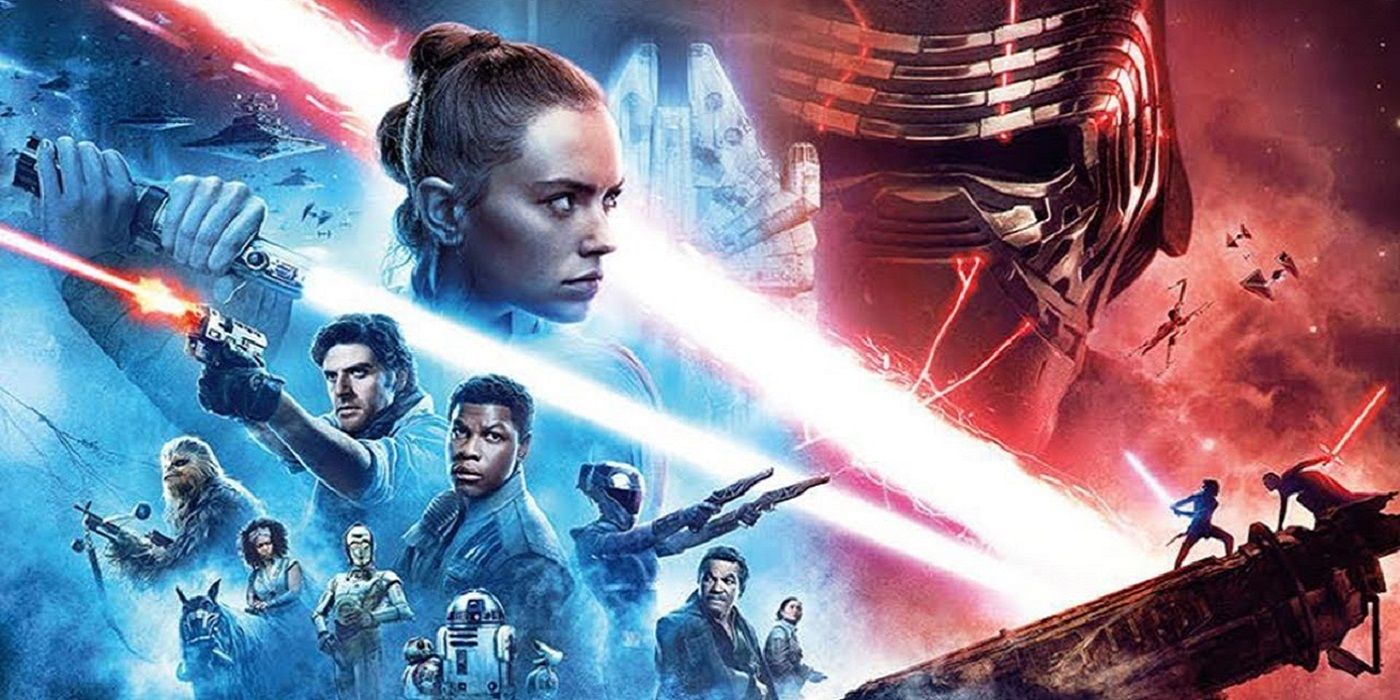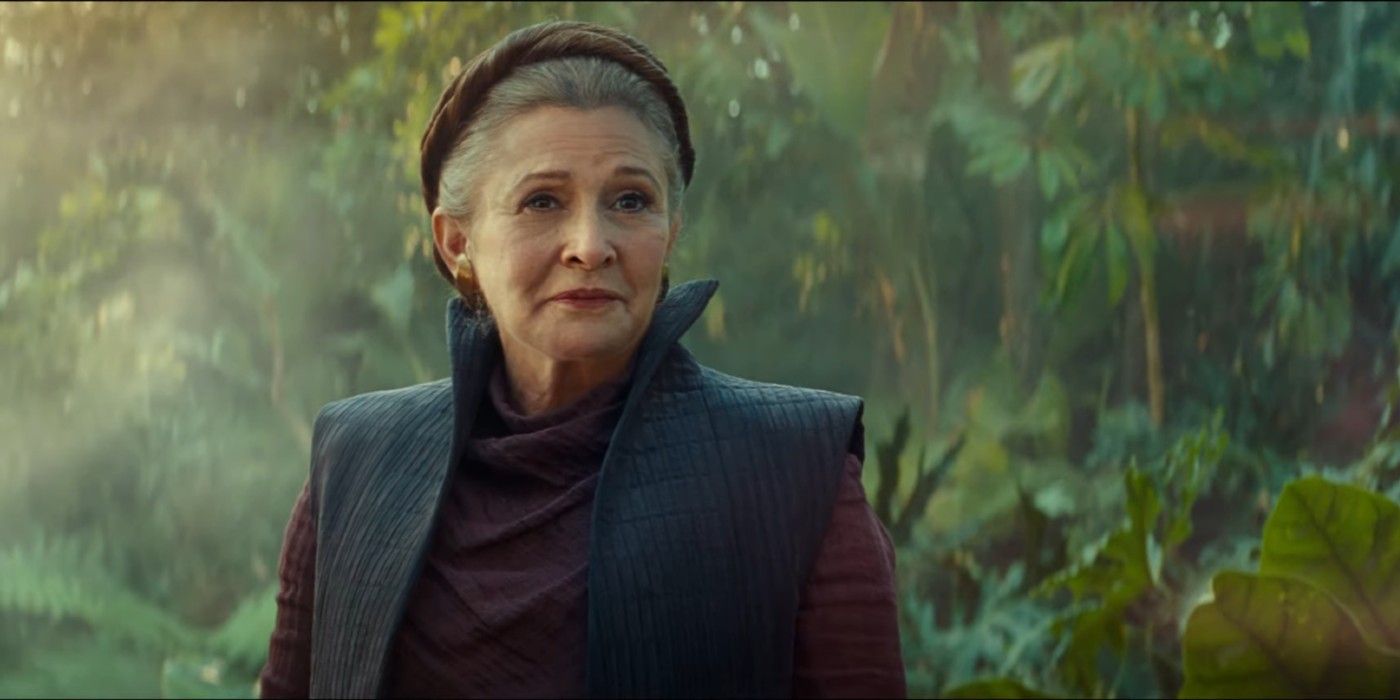
The Rise Of Skywalker was supposed to be the movie in which General Leia Organa took center stage. Much like Han Solo in The Force Awakens and Luke Skywalker in The Last Jedi, Leia was set to play a major role in the final installment of Star Wars' sequel trilogy. Sadly, Carrie Fisher's tragic passing meant that fans never got to see that vision fully realized in the final movie. Having been chosen to replace Colin Trevorrow, returning director J.J. Abrams opted to use existing footage from The Force Awakens to involve Leia. Instead, he should have opted to kill her off-screen.
Disney's decision to market The Rise Of Skywalker as the culmination of the Skywalker saga was part of a concerted effort to appeal to fans who had been disappointed by The Last Jedi. Thankfully, it seems director Rian Johnson's own Star Wars trilogy is still in development. However, perhaps there was additional pressure to include Leia as a touchstone, to keep fans on board. Ultimately, one of the many reasons The Rise Of Skywalker came in for criticism was for playing safe and the decision to include Leia is symbolic of that.
RELATED: Star Wars And Racism: How Disney Failed John Boyega And Finn
Abrams, and fellow screenwriter Chris Terrio, in what was often seen as a script written to appease a vocal minority of so-called fans. The result is detrimental to final cut and the movie is weaker for her inclusion. Each scene she appears in feels stunted, retrofitted around snippets of stilted dialogue that offer little in the way of substance or subtext. The actors do their best to convince in the scenes they appear opposite Leia, but shoehorning lines like "nothing's impossible" or "never underestimate a droid" into the script as though they are catchphrases without any real context simply robs them of real resonance.

The Star Wars sequel trilogy suffered as a result of not having a unified vision, yet Leia's scenes were even more disjointed. One interaction with Snap Wexley sees Leia ask if "there's been any word from Rey?" to which Snap responds "the Falcon's not responding." Rose then guides the conversation, asking "do you have to say it like that?" in order to bend the scene around Leia's next reply, "do me a personal favor, be optimistic." Snap goes on to say that the situation is "terrific" and "everything's going to work out great." Leia appears neutered, a static presence and literal embodiment of the famous critique that "the character walked in from the set of another movie."
Leia's dialogue doesn't just disrupt the flow of a scene, it also has a detrimental effect on the narrative. During the movie's first act, Rey continues her Jedi training on Ajan Kloss, the Resistance's base planet. Leia has seemingly taken on the mantle of training her, and while the film retroactively conjures an unsatisfying subplot that Leia had her own lightsaber and trained as a Jedi after Return of the Jedi, the primary reason seems to be that the old footage of Leia fits best with Rey due to her holding Luke's lightsaber.
The result is an incredibly disjointed opening act that forces manufactured tension between Rey, Finn, and Poe as a result of her staying behind to train while they carry out missions. Compounding this is a feeble scene where Rey explains to Leia that she intends to pick up Luke's search for a Sith holocron in order to reach Exegol and confront Emperor Palpatine. This diluted version of Leia simply says "No," to which Rey replies "I don't want to go without your blessing, but I will. It's what you would do." It's a further example of artificial tension that the movie attempts to force into existence, sapping any emotional resonance from the scene. Leia's presence is a hindrance as much of the first act is spent awkwardly contriving scenes around the existing footage rather than fully forming the motivations of, and dynamic between, Rey, Finn, and Poe for the rest of the movie. Perhaps there would even have been room for that Stormtrooper rebellion.
During The Last Jedi's dénouement, Leia had already passed the torch onto Poe Dameron. "What are you looking at me for?" She says as the last of the Resistance forces look for leadership, "follow him." With The Rise of Skywalker not picking up immediately after the climax of the previous movie, there was a clear opportunity to hand over leadership to Poe and handle Leia's death in the opening crawl, or indeed in the opening scene.
Poe and Finn later squabble about who knows what Rey is going through as she struggles with her lineage with Poe lashing out, "Well I'm not Leia!" to which Finn replies "That's for damn sure." Audiences can acknowledge the emotional beat, but it has no poignancy - Leia is still alive at this point and Poe has no leadership tasks to suggest he's even trying to live up to Leia. Had she been killed off-screen, it would have enabled the film to examine Poe struggling with the weight of following in Leia's footsteps during the opening act of the movie. Furthermore, it grants more substance to the moment he shares with Lando, as the heroes of the sequel trilogy attempt to emerge from the shadow of the original trilogy's heroes.
Whilst her presence in the first act holds the movie back, her final act is a stirring moment that is crucial to Kylo Ren's redemption. The bond between Leia and Kylo became apparent when he trained his TIE Silencer's blasters on the Resistance command ship in The Last Jedi. Kylo, still reeling from killing Han Solo, feels Leia's presence through the force and was unable to do the same to his mother. The Rise Of Skywalker calls back to this moment as Leia reaches out with the force to Kylo during his duel with Rey on the Death Star II wreckage.
As Leia reaches out, she distracts Kylo long enough for Rey to strike a winning blow. Much like her brother Luke's astral projection, the sheer effort required is too much for Leia, resulting in her death. Rather than look at this as justification for her inclusion, it's more fitting to acknowledge that she serves the story in death, and had she been killed off-screen the plot could have been better served as a whole.
It would be naïve to argue that killing Leia off-screen would result in an entirely coherent Star Wars movie, this is the same film that explicitly tells the audience that Holdo manoeuvers are a "million to one shot" and not a plausible tactic - only to show one triumphantly 40 minutes later. That said, The Rise Of Skywalker's narrative is consistently hamstrung by the decision to reuse old footage of Leia. Even if the filmmakers felt compelled to honor Leia with an onscreen send-off, the manner in which they chose to do so hampered the entire movie.
NEXT: Daisy Ridley Says She's Open To Returning To Star Wars Series After 'The Rise Of Skywalker'

